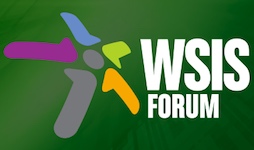Rights, governance, protocols, and standards
12 Jun 2017 16:30h - 18:15h
Event report
[Read more session reports from WSIS Forum 2017]
The session was opened by video message from Mr David Kaye (UN Special Rapporteur on freedom of expression) who highlighted the issue of private sector responsibilities in the digital age featured in his recent report. He also mentioned the role of states, as they are increasingly putting pressure on the private sector by shutting down resources and networks, and blocking access to websites and web pages. Some states are pushing against network neutrality. Kaye pointed out that some states operate their restrictive policies through private companies who actually mediate between a state and an individual. He asked, what is the scope of responsibilities of those private actors to safeguard the freedom of expression?
The moderator of the session Mr Niels ten Oever (Head of Digital, ARTICLE 19) set out the session format by asking the panellists to present their opinions by answering short questions regarding the relationships between human rights and Internet infrastructure.
Mr Nicolas Seidler (Senior Policy Advisor, Internet Society) replied that it is not a question of ‘if there any relations between these issues’ but rather how human rights evolve through the Internet. Since 2010 people have been trying to understand how the existing rights apply to the Internet. In 2012 the first UN Human Rights Council resolution affirmed that offline rights are applicable online. With the growth of the Internet, the number of actors involved in human rights protection has increased too. He said that we are now witnessing standardisation organisations like the IETF paying attention to human rights issues.
Ms Theresa Swinehart (Senior Vice President, Multistakeholder Strategy and Strategic Initiatives, ICANN] noted that the roles and responsibilities over human rights are very diverse among different actors, with governments playing a strong role in particular, with adherence to international human rights instruments. To look at ICANN, she said, ‘we have a limited role on coordination of the unique identifier system’. It is clear that ICANN doesn’t go into content-related issues. But ICANN has a responsibility to work with its community, which includes the private and technical sectors. ICANN also has to work transparently to ensure proper policy development. As ICANN is in transition from contractual relations with the US administration process, the question of the incorporation of a core value around human rights that is balanced against the rest of the core values of the corporation has come to the attention of the stakeholders.
Mr Brian Trammell [Member, Internet Architecture Board, IETF] pointed out that the IETF is made up of ‘engineers that have some values that they don’t like to see as values’. The IETF also stays out of the content space, but its values and technical principles have some elements in common with the issue of ‘Internet shut downs’. Trammell was speaking about the principle of connectivity: ‘more connectivity is better’. He also mentioned ‘devotion to decentralisation as a pattern’. Currently there is a trend in media to decentralise its content to maintain its accessibility. Trammell also talked about IETF Research groups who work on how to take human rights considerations more explicitly into account in protocol design.
Dr Bilel Jamoussi [Chief, Study Groups Department, ITU-T] reminded the audience about the International Telecommunication Regulations adopted in 2012 in Dubai. The preamble of the treaty says ‘member states affirm their commitment to implement these regulations in a manner that respects and upholds the human rights obligations’. He recalled that this particular sentence took a long time to be agreed upon, as some states had reservations. He noted that if we go back to the infrastructure question, the Internet uses some standards developed by the ITU and surely ‘we need to ensure that the human rights of the citizens of various countries are upheld’. The deep packet inspection standard of the ITU takes it closer to the content regulation area, but there should be a distinction between the policy behind the protocol and the protocol itself. In other words, the censorship mechanism of content filtering for radical and extremist materials and for blocking unfavourable information are the same, but the policies behind the implementation of filtering differs in the human right perspective.
by Ilona Stadnik
Related topics
Related event

